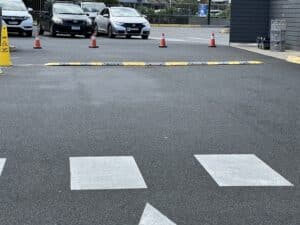

 *Note: This article focuses solely on automated mobility scooters and is not intended to provide guidelines for manual wheelchairs and non-mechanised mobility aids.
*Note: This article focuses solely on automated mobility scooters and is not intended to provide guidelines for manual wheelchairs and non-mechanised mobility aids.
Mobility scooters are the ideal mode of transport when you no longer feel equipped to drive a car or are unable to walk freely without discomfort. Mobility scooters allow you to once again feel independent and conduct your daily errands easily and efficiently.
When using a mobility scooter, it is important to note that they do also have their own set of road risks, and various legislative road rules do apply when driving a mobility scooter. These risks and rules need to be addressed before purchasing a mobility scooter to ensure that your individual needs will be met without compromising your safety.
Before you purchase a scooter
Before purchasing an automated mobility scooter, ask yourself the following questions:
It is very important to critically assess these factors and purchase a scooter that is specifically suited to your individual requirements. Most retailers will guide you through the selection process to ensure that you select the correct scooter.
Do not assume that because you have used a motorised wheelchair or mobility scooter before, that you can use any mobility device. There are many different models, each with different features and characteristics. It is important to be very familiar with a device and the location of its controls.
Scooters can rapidly gain momentum on steep down hills. This can pose a number of risks if you are not familiar with the device and how to effectively operate the brakes, or if you incorrectly select a model that is not suited to your body’s strength and manoeuvrability.
If the route to your local shops forces you to drive on a busy main road that does not provide a footpath, then you need to critically assess whether a scooter is a viable option. Placing yourself in unnecessary risk is never worth the appeal of travelling independently. Each state provides comprehensive guidelines on how to use mobility scooters in conjunction with public transport. So rather than trying to travel the entire route by scooter, opt for only travelling to the nearest bus stop to avoid riding on dangerous routes.
Registering your scooter
While you do not require a driver’s licence to drive a mobility scooter, you are required to register any motorised wheelchair. Third Party insurance is also a compulsory requirement. And you are also required to have a doctor’s certificate that clearly outlines your mobility impairment. A doctor’s certificate must be provided each time a different mobility scooter is registered, and you should carry this with you at all times of travel.
Road safety
When driving a mobility scooter, the following road safety rules must be applied:
Further information
It is important to be aware of any state-specific legislation that may pertain to your area of residence. Here are just a few helpful links to provide you with additional information such as how to travel on public transport with mobility aids, selecting the correct scooter, and a summary checklist.
Western Australia – http://www.ors.wa.gov.au/Road-Safety-Topics/Road-Users/Seniors#MotorisedVehiclesGophers



For 10 years, our focus has been on one thing: to provide one style of product and to do it well.
Our wheel stops, speed humps and rumble bars meet Australian Standards, don’t fade, and we’ve never needed to replace one.

For 10 years, our focus has been on one thing: to provide one style of product and to do it well.
Our wheel stops, speed humps and rumble bars meet Australian Standards, don’t fade, and we’ve never needed to replace one.